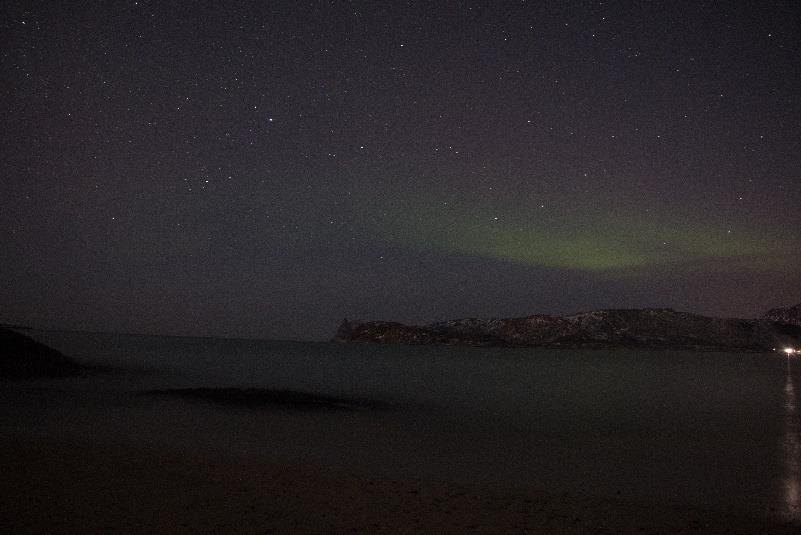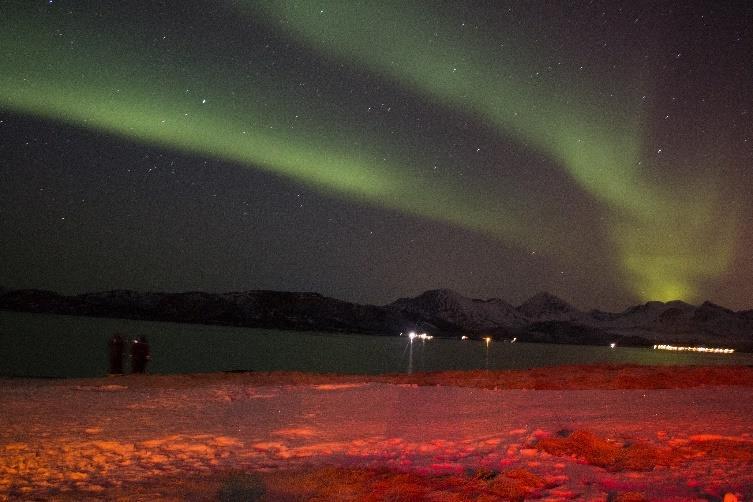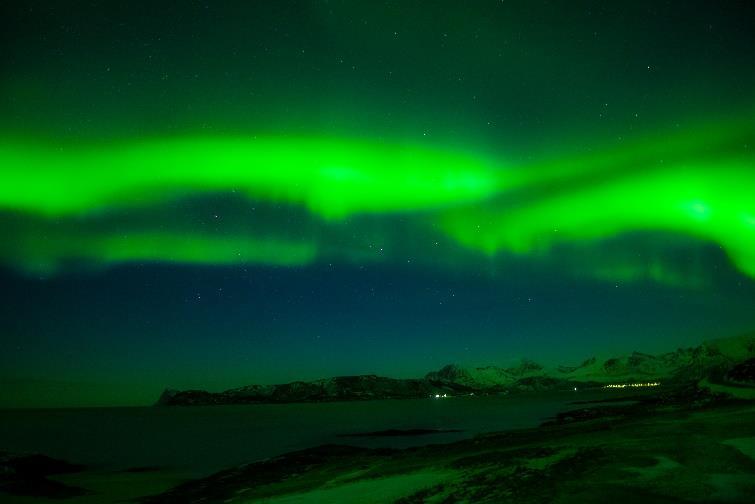
7 minute read
Chapter 11 - Northern Lights - The nature’s magical wonder
This day is the most memorable day of my "Arctic circle trip" ,Yes.. Now am going to watch one of the enlightening nature's wonder “Northern Lights”. Weather forecast is an unavoidable factor if you need to watch the northern lights. There are many mobile apps available to check the predictions. Once I woke up from the nap I checked my phone for today's weather forecast. Wow.. the prediction saying 90% of chance for powerful northern lights. To watch the perfect northern lights, we need to travel to the outskirts of the city where the sky is clear and free from pollution. To explore such a best spot is tedious for this weather situation. The temperature has dropped down below -15 now and a soothing breeze started to blow. So, as I have expected the situation, we decided to book the first day of northern light experience as a tour. As we were not ready to take chances, we booked with one of the best tour operators “The chasing Light Tromso”. This is a customized tour so, they will pick up us from the city centre and the guide Mr.Jonas - a local and well known professional photographer who supported us for photography. A gang of 8 of us in a wagon drove to the northern Chapter of Tromso, a place which is light pollution-free and a good scenic view for northern lights. On the way, Mr.Jonas was explaining about the northern lights and tips for photography. We drove around one and a half hours to find a good spot. This spot is near Sommarøy island entry bridge. Where nature is blessed with an amazing seashore along with mountains. We parked our van near the road and walk towards the seashore. The temperature here is around -18 and was a bit windy. But we don't have any option rather to sit and wait for the northern lights on this seashore. Most of the shore area is wrapped with a thick layer of snow and some areas are completely frozen ice. Jonas brought some Reindeer skins, blankets, wood for the campfire and some hot food. We made up the campfire, sat around, and eagerly awaited for the northern lights to arrive. Meantime Jonas served everyone some hot beef, veggies and some hot berry juice.

Advertisement
Since we are waiting for the northern lights, we set our cameras to an apt location where we can capture the photos of the lifetime. We were super lucky to witness a clear sky, zest with billions of stars in our naked eyes. We captured a few photos meantime.
Still, we are waiting for the northern lights to come. Actually, capturing the northern lights in the camera requires specialization in photography. However, with systematic practice over basics can get the best results. I will recommend using a full-frame DSLR camera to capture this (i am using Nikon D750). But the choice of lens is most important. The best result you can get from a F 1.4 or F 1.8 Wide angle lens. Of course, we can take this using F2 or F2.8 lens also. But it always depends on the strength of the Northern Lights. Then you need a good heavy tripod to stand motionless against the strong wind. A shutter remote, so you can take long exposure photos. And a good knowledge of camera



manual settings. Because each time the strength of the northern lights will change. So, we need to change the camera settings accordingly at a quick pace. Time is around 10.30pm now. We started noticing a cloudy sky and isn't green coloured. Anyway, we tried to take a long exposure photo of that… unbelievable.. Yes.. it's the northern lights.. The magic just started.
Within 10-15 minutes the Ray's started becoming more and more powerful. We started clicking our camera and enjoying this natural wonder. The northern lights are getting much stronger between 11pm-2am. After taking
some photos, I laid down on that Reindeer skink by looking at the sky, watching this amazing dancing light and billion stars being thankful for realizing how lucky I was to witness this. After some time, regained my conscious and focused on capturing photos on the camera. Now the northern light is very strong and floating like a sky reviver. It’s moving, changing patterns, so we are betting different pictures on each click. And when it's getting stronger and stronger, the seawater is reflecting the light and the whole area is becoming greenish. We want to capture that light reflection from the water. So we moved our tripod into the water area so we can get a better picture. But unfortunately, I did a wrong step. When I stepped into the water, it was deeper than I expected. My leg dipped completely inside the water and my feet and pants became wet. It's damn cold. It's -18 outside. But I know, this is a once in a lifetime moment. So I was not ready to compromise. Took some photos promptly on the water and ran into the campfire. Removed my shoes, layers of wet socks and kept my legs very close to the campfire. Luckily we were carrying some heating packs. So I used that inside my shoes while we are going back. I will recommend everyone to carry some extra pair of socks and heating packs when you are planning for this trip.











We spend there till 2 am there watched amazing northern lights. Meantime we talked to other co-travellers and Jonnas to get some good ideas about northern lights hunting locations. We stayed in Tromso for 5 days and each day we drive into some locations and experienced amazing Aurora all the days.
Some Tips to Watch This amazing Northern Lights
Planning plays a major role when we seek such adventures, and of course, a lot depends on the luck as well because nature is unpredictable. However, I would like to share some tips based on my experience and research that I believe would be useful for my readers. Firstly, the intensity of the Aurora is not always the same - it varies based on the Solar Cycle Year. Solar Cycle Year can be related to the sun's heartbeat, which beats in every 10-12 years. It is measured by the number of sunspots visible on the sun. The more sunspots, more is the solar flare energy that is released into space and that means more Aurora activity! As per predictions, the next peak time of the solar cycle will be during 2024-2025. But still, it’s possible to watch northern lights every year winter time. The best time to visit Aurora is during the months of January and February; cause these cold months to offer more visible sky. Also, cold months offer lesser daytime (from 9am to 3pm) and that would mean we get more time to view the northern lights. Checking weather forecasts before planning could help in avoiding cloudy, snowy and full-moon days. The Aurora lights are not visible clearly with the moonlight or with the clouds and our pictures are not going to be perfect. The hunting spot or the spot you choose to view the lights are also very important. While choosing a place, consider the KP index of the place. This planetary 3-hour range index KP is the standard from 13 geomagnetic observatories between 44 degrees and 60 degrees north or south geomagnetic latitude. The best places would lie in between KP0 and KP3 (refer KP map). After all those amazing experience, we reached back to our AirBNB at 3.30am. We did get enough for the next day's activity. Next day, we had a snowshoe hiking to the Kvaloya Mountain.










